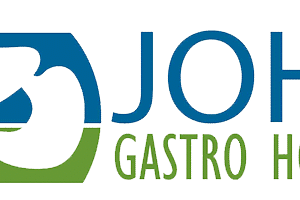Abortion pill reversal is a process that some women seek after taking the first dose of a medical abortion, also known as mifepristone. Abortion pill reversal (APR) seeks to offset its effects and maybe prolong the pregnancy in circumstances whereby a woman changes her mind after taking mifepristone. The treatment course has to start fast and consists in the progesterone administration. For those wondering how does abortion pill reversal works, it involves administering progesterone to counteract the effects of mifepristone, ideally within a short time frame after the first dose.
This post looks at the beginning of the abortion pill reversal process, the actions involved, and what women should expect should they decide to go this direction. We seek to provide clear information for educational purposes; we do not conduct or refer to abortion.
Understanding the Abortion Pill Process
It’s important to know how the abortion pill actually works before delving into the reversal process. Usually involving two drugs, mifepristone and misoprostol, medical abortion is Mifepristone, the first pill, blocks the hormone progesterone, which is necessary for preserving pregnancy. The uterine lining breaks down without progesterone, so the pregnancy cannot last.
Usually taken 24 to 48 hours later is the second pill, misoprostol. It generates contraction that ejects the pregnancy from the uterus. Those who regret taking the first pill and have not taken the second could want to investigate abortion pill reversal.
Initiating the Reversal Process
Timing is Critical
Time comes first and most importantly in the process of reversing the abortion pill. The therapy should start ideally 24 to 72 hours after mifepristone is used. The reverse starts sooner the more likely success is. This is why quick interaction with a healthcare professional acquainted with the process is crucial.
Women who regret starting the first pill often see specialized medical experts, such those connected to women’s health facilities providing reversal information. For education, someone in Oklahoma might see a provider comparable to the Norman Women’s Health Center, but it’s crucial to make sure they know their alternatives and act fast.
Medical Evaluation and Assessment
A medical assessment comes next whenever a woman seeks aid. Usually, this comprises:
- Confirming the mifepristone dose’s time
- Ultrasound confirmation of pregnancy viability
- Evaluating general health and any contraindications to using progesterone
Usually looking for a fetal heartbeat and verifying the pregnancy is in the uterus, a healthcare provider will do a transvaginal ultrasound. This stage is essential to evaluate whether the reversal method is suitable and to keep an eye on the state of the pregnancy as well as the mother.
Administering Progesterone
Giving progesterone—the hormone mifepristone blocks—is the pillar of the reversal procedure. This treatment’s basic idea is that pumping the body with natural progesterone can help to offset mifepristone’s effects and let the pregnancy proceed.
One can obtain progesterone in numerous forms:
- Dental capsules
- Vaginal inserts
- Intersmuscular injections
The recommendation of the clinician and the patient’s health state determine the administration method used. Usually running many weeks into the first trimester, the treatment ensures enough hormonal support.
Monitoring and Follow-Up Care
Ongoing Care is Essential
The woman will have to return for frequent visits once progesterone therapy starts. These visits could call for general health evaluations, hormone level checks, and follow-up ultrasounds tracking fetal progress. Healthcare professionals concentrate on making sure the woman is not having negative effects from the drug and that her pregnancy is proceeding safely.
Regular monitoring helps the clinician to see any possible issues early on and to modify the progesterone dosage if necessary. Given the emotional complexity of the decision to reverse a medical abortion, psychological and emotional help could also be provided at this period.
Factors Influencing Success
Whether abortion pill reversal is successful depends on several things. Timing is still the most important factor; the chances are better the earlier therapy starts. Other considerations include the woman’s general health, whether the second pill—misoprostol—has already been taken, and mifepristone dosage.
Initiated within 72 hours, studies and anecdotal data point to a success percentage for the abortion pill reversal process between 64% and 68%. But it’s crucial to realize that no medical intervention can promise outcomes.
Is It Safe?
Given that progesterone has been used for decades to support pregnancies at risk of miscarriage, many doctors view it as a safe therapy. Having stated that, every medical technique has some risk; so, every case should be evaluated separately. Women contemplating this treatment should carefully go over the risks and rewards with their practitioner.

Emotional Aspects of Reversal
Changing one’s mind about stopping a pregnancy can cause a spectrum of feelings, including fear, relief, guilt, or doubt. Pursuing abortion pill reversal is a very personal choice impacted by several life events.
During this period, access to professional counseling or emotional support might be quite helpful. Although the physical reversal process takes the stage, emotional well-being should not be underlined. Support systems can be quite important in guiding women across this difficult choice.
Frequently Asked Questions
How does abortion pill reversal work?
The first abortion pill, mifepristone, is counteracted by progesterone, a naturally occurring hormone vital for maintaining pregnancy, in abortion pill reversal. Ideally, the treatment starts 24 to 72 hours after mifepristone is taken. Should the pregnancy be successful, the progesterone will encourage fetal development and stabilize the uterine lining, therefore helping to maintain the pregnancy.
Can I begin reversal treatment if I’ve already taken the second abortion pill?
If the second pill, the reverse process, has already been taken, its success is much reduced. At that time reversal is improbable since misoprostol forces the uterus to contract and eject the pregnancy. If only mifepristone has been taken, nevertheless, calling a healthcare provider right away gives the best possibility for a successful reversal.
Conclusion
Abortion pill reversal starts with fast action, medical assessment, and the delivery of progesterone. If women who regret taking the first dose of the abortion pill respond quickly, they could be able to carry on their pregnancy using this hormone treatment. Given that the process can be both physically and emotionally taxing, it calls for constant medical monitoring and emotional support.
Knowing how abortion pill reversal works helps folks who are unclear about their alternatives to have clarity. Whether one is looking for education at the Norman Women’s Health Center or elsewhere, having access to honest, accurate, and compassionate information will enable women to make wise decisions.
Although reversal of the abortion pill is not guaranteed, some women decide to investigate when they change their minds following a medical abortion. As always, choices about pregnancy are very personal, and support—medical as well as emotional—is absolutely essential along this road.









